This site is part of various affiliate programs. Links may give us a small compensation for any purchases you make, at no additional cost to you. Please read the disclaimer policy for full details.
My top choice is the Canon PIXMA PRO-200, thanks to its fantastic print quality, low likelihood of jams, and relatively low price for a pro printer, although there may be a better choice for you depending on your print volume.
Although I do most of my photo printing on standard photo paper, photo prints on cardstock are actually in many ways better, as printing on thick paper gives a real textured, solid feel to your images.
Printers that can print on cardstock are also ideal for invitations, greetings cards and for turning your digital art and drawings into real, physical art pieces that look professional and impressive.
Generally though, you can’t use regular home printers, as cardstock is too thick or stiff and can jam or just not fit through the rollers. Therefore, I have put in hours of my own research, plus used my practical experience, to compile a list of the best printers for cardstock, that can all handle thick paper printing.
You can be assured that these are the best printers for greeting cards, the best printers for cardstock invitations, and the best printers for heavy cardstock overall. Along with reviewing each printer, I have included the maximum paper weight that you can print, such as 110 lb cardstock or 300gsm, and some observations on actually using these printers.
The full reviews include the below models:
- Overall Best Cardstock Printer – Canon PIXMA PRO-200
- Best Pro Printer for Thick Card – Canon imagePROGRAF PRO-300
- Very Good (but older) Prosumer Printer for Thick Paper– Canon Pixma Pro-100
- Best Large Format Printer – Canon imagePROGRAF PRO-1000
- Best Epson Cardstock Printer – Epson SureColor P700
- Printer for Card Making and Invitations – Epson Expression Photo HD XP-15000
- Best Value Home Printer for Cardstock – HP Envy 6055
- Best Laser Printer for Cardstock Printing – HP Color LaserJet Pro M454dw
The Best Printer for Heavy Cardstock
The Best Printer for Cardstock
- Can handle pretty much any weight of cardstock, at least up to 150 lb / 400 gsm
- Newest model, an update on the Pro-100
- Vibrant, sharp prints with beautiful colors making it the best color printer for cardstock
- Low ink cost per sheet
- Up to 13 inch wide prints possible
- Borderless printing up to A3
- Dye-based inks, so very slight color cast for black and white images under different light sources
Read More:
Comparisons of the Best Cardstock Printers
Printer | Image | Pros / Cons | No. of Inks & Ink Life | Max. Print Width | Check Price |
[Best for those on a Strict Budget] |
| 2 Inks 65 sheets | 8.5 inches | ||
| 10 Inks 20 sheets | 13 inches | |||
| 8 Inks 50 sheets | 13 inches | |||
[Best Budget Pick] |
| 6 Inks 70 sheets | 13 inches | ||
| 12 Inks 700 sheets | 17 inches | |||
| 10 Inks 500 sheets | 13 inches | |||
Canon PIXMA PRO-200 |
| 8 Inks 500 sheets | 13 inches | ||
| 4 Inks 1250 sheets | 8.5 inches |
What Should You Look For in a Cardstock Printer?
The best printers in the market for printing on thick cardstock all have several key points in common: they are nearly all inkjets that use large numbers of individual inks for color accuracy; they can print on a wide range of paper sizes and types; and they are premium products that produce professional quality prints.
The non-negotiable, key questions you should ask of a printer are:
- What Paper Weights & Styles can it print?
- Is it Value for Money?
- Should I go for Laser vs Inkjet?
- What is the Color Accuracy?
- What Print Sizes are possible?
- How many Prints per Ink Cartridge do you get?
Paper Weights & Styles
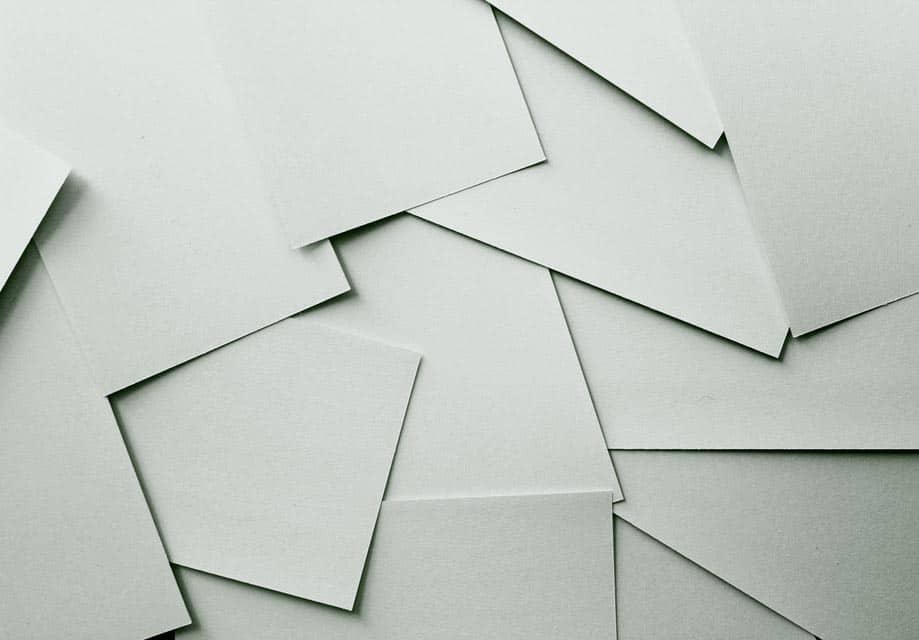
Before you can find the best card stock printer for you, you need to have some idea of the weight and style of the paper that you intend to print on.
Although paper manufacturers give them a weight, like 90 lb or 250 gsm, (derived from the weight of 500 sheets before being trimmed to size), the weight itself does not directly tell you the thickness or strength of the paper, as paper density can vary due to how it is made.
And it is more the thickness and flexibility of the paper that determines whether you can feed a sheet through your printer or not.
Generally, regular printers cannot print on cardstock, as most home printers need the sheet of paper to rotate through 180 degrees, and most cardstock is too stiff to allow this to happen. But whether a sheet has the flexibility to rotate or not cannot be determined from the weight alone.
For example, 140 lb cardstock paper like the Hahnemuehle 400gsm Canvas has quite a lot of flexibility even though it is heavy. It is not too stiff, so can deal with regular printers to a much greater extent than some 100 lb cardstock paper like the Hahnemuehle 285gsm Torchon, which has too much stiffness to be used on a front fed printer, despite its lower weight. Therefore, you would need a rear feed printer for cardstock for the latter paper.
Printing on heavy cardstock is often dependent on paper construction, in addition to paper weight.
All of the printers for thick cardstock in this article can be rear fed, making them suitable for all paper types, with most able to deal with weights up to 110 lb cardstock or above. By contrast, standard home printers often top out at 65 lb cardstock weights.
Note that the weights of cardstock and standard index paper cannot be directly compared. Although you might think that 80 lb cardstock would be thinner and less stiff than 90 lb index paper, this is not the case, with the 80lb cardstock actually thicker. This is because the weight measurement is made on 500 sheets of the paper in it’s untrimmed form, which is much larger than the final sheet of paper that you end up with.
Paper Weight Conversion Table: if you need to quickly switch between US pounds (lb) and rest-of-world grams per square meter (gsm) measurements.
| Cover Paper Weight (500 sheets, untrimmed) | Paper Grammage (500 sheets, untrimmed) |
|---|---|
| 50lb | 135gsm |
| 60lb | 160gsm |
| 65lb | 175gsm |
| 80lb | 215gsm |
| 90lb | 250gsm |
| 100lb | 270sm |
| 110lb | 300gsm |
| 120lb | 325gsm |
| 130lb | 350gsm |
| 140lb | 380gsm |
| 150lb | 400gsm |
Of course, I have assumed that you want to use your printer for digital art prints, drawings or to print pictures on cardstock, whereas if you are simply looking for the best greeting card printer, then home printers that use 60lb cardstock paper might be more suitable, although if you have the budget, the more premium models in this article are likely to give you a better end result.
In addition to paper construction and weight, you should also bear in mind that the paper coating can have an effect on printability. Coated paper can leave a film on the printer rollers that gums them up in short order. Most manufacturers therefore recommend that you run a regular sheet of paper through after every two or three coated sheets, which should remove the coating from the rollers and preserve the life of your printer.
Value for Money
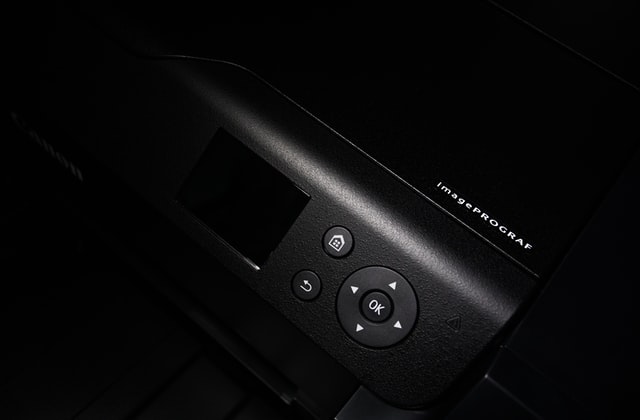
If you have a very specific use-case, such that you are looking for the best printer for printing greeting cards at home or similar, then a standard, inexpensive cardstock printer like the Epson EcoTank ET-2720 will likely be fine for you, although print quality will be noticeably lower than more expensive printers.
But if you intend to print on a wide range of media, and particularly if you want to print on thick paper or cardstock in the range of 110lb / 300gsm or above, then you will have to spend more money to get something like my top choice, the Canon PIXMA PRO-20, which is the best printer for 300gsm card.
I would still consider this more expensive printer to be value for money, thanks to its exceptional print quality and color accuracy, as well as the wide range of applications it can be used for – you’re not going to need another printer to fill in the gaps of this one.
Ultimately, you get what you pay for.
If you have the budget, then the top-end printers deliver pro-level, lab quality prints at home, and save you the costs of using a pro lab into the future.
But if you are not selling your prints, then the cheaper printers still offer very good print quality for home use.
Laser / Inkjet
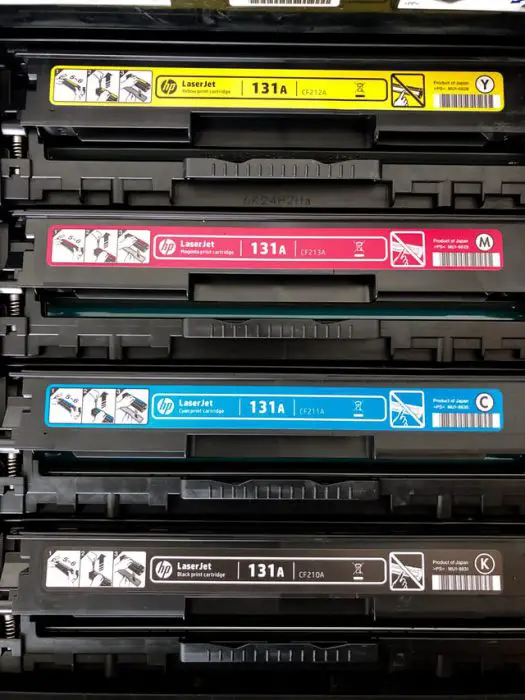
The laser vs inkjet question comes up a lot when looking at cardstock printers, with some pros and cons on both sides.
HP printers for cardstock are often cited as the top laser models, and Canon or Epson printers get the nod for being the best inkjet printers for cardstock by most reviewers.
My personal opinion is that inkjet printers are superior to laser printers for most art uses, and particularly for cardstock.
Laser printers are relatively expensive for the print quality, and cost significantly more for color printing than inkjet printers on a per sheet basis, when you take into account initial purchase price and replacement ink.
Inkjet printers also offer much higher color fidelity in the top-end models, as they can have 10+ individual inks which allow for more subtle color gradations and minimize banding.
Laser printers only really win out on speed, and for situations where you need to create a high number of lower quality copies in a short time. Although inkjet printers are slower, their cardstock prints are of a noticeably higher quality.
Color Accuracy
For accurate color printing, more inks are generally better, and this can be confirmed through printing a printer test page.
The most basic, cheapest printers that you can buy (which aren’t reviewed here), only have two ink cartridges, one color and one black, while the most expensive printer, the Canon imagePROGRAF PRO-1000, has 11 inks in total.
Obviously, this means that the Canon Pro-1000 can make much more subtle prints than a cheaper, two cartridge model, although you are unlikely to see much difference in practice between the Pro-1000 and the cheaper, 8 ink Canon PIXMA PRO-200, hence why I recommend that as being better value for money.
Don’t forget that to ensure your prints come out exactly as you expect, you should be using a color accurate monitor. You can find the best options in the article on the best monitors for photo editing.
You should also use an ICC profile that is appropriate to the paper you are printing on. This is because your monitor displays colors using Red, Green and Blue (RGB) pixels, while good printers like those featured here follow the Cyan, Magenta, Yellow and Black (CYMK) format which offers greater color range.
Therefore, you need to apply an ICC color profile to your monitor to negate the difference between RGB and CMYK.
The top paper manufacturers all provide these profiles, and they can be easily integrated into Photoshop, or whatever other program you use. Have a look at Hahnemuehle’s website for some examples.
Print Sizes and Speed
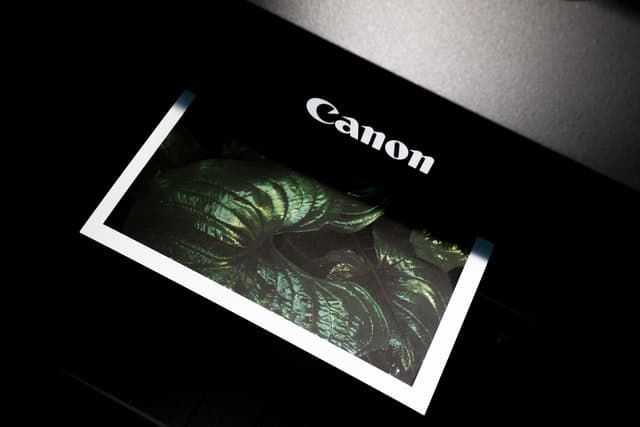
Print speed is generally relatively slow on inkjet printers, when compared to laser printers, but this is also dependent on print size, or whether you have borderless printing selected.
If printing a full width, 17 inch wide print on the Canon Pro-1000, expect it to take over 10 minutes, but a standard 6 x 4 inch photo could be printed in around a minute and a half.
A 17 inch wide print would be overkill for most people, particularly if you are only looking to print greetings cards or invitations, and as you would expect, the wider the prints, the more expensive the printer.
Therefore, it pays to think about both your current intended uses for the printer, and any potential future uses, so that you are future-proofed.
Remember that although the high-end printers are expensive, they will save money in the long run by enabling you to make large prints at home, instead of having to go to an expensive lab.
Number of Prints per Ink Cartridge
A major concern when looking for the an inkjet printer for cardstock is the length of time each ink cartridge will last, and how many prints it will make, before running dry.
Cheap, two cartridge printers, have ink that is relatively cheap to replace, but high-end printers with 10+ ink cartridges can put a fair dent in your wallet when it comes time for a replacement. Even if each individual cartridge is only $12 or so, that adds up to $120 for a printer like the Canon Pro-300.
Luckily, there are an increasing number of manufacturers of third-party ink, which are significantly cheaper than the official ink. For example, a full, official set of ink for the Canon Pixma Pro-100 costs about $100, but a full generic set is only $21.
Unfortunately, the most recent Canon printers do not yet have generic ink available. Epson printers do have lots of generic ink, but these cartridges often get disabled in the printers by firmware updates sent to the printers by Epson, so check recent reviews before buying any.
You can check both official and third-party ink prices and availability in the reviews for the individual printers.
Connectivity & Size
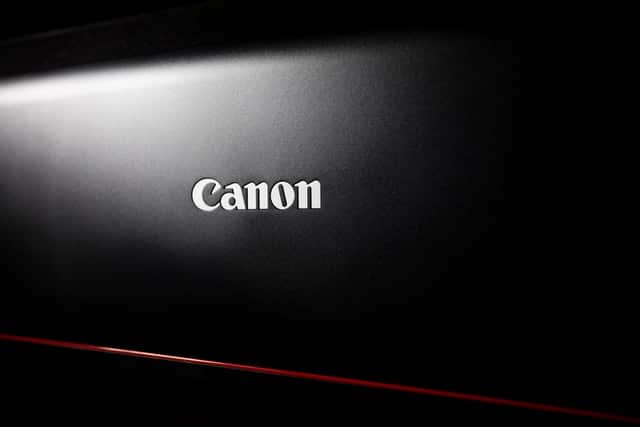
Most printers now connect to your home WiFi as standard, which is particularly helpful for the larger printers, meaning they can be tucked out of the way somewhere.
Some printers also have touchscreens which can be very useful. This is noted on the individual printer reviews.
But perhaps the one thing you should be aware of is the massive size of some of these printers. If you are used to home printers, then a model like the Canon Pro-1000 might shock you – this is 28.5 x 17 x 11.2 inches (72.4 x 43.2 x 28.4 cm) and weighs about 70 lbs (32kg)!
So, make sure you check you have space where you intend to put your printer.
Reviews of the Top Printers for Thick Paper
All printers listed below are good choices, with the main differences between them being price and maximum size of print they can produce.
1. Canon PIXMA PRO-200
-
Specifications:
- Brand: Canon
- Name: Canon PIXMA Pro-200
- Printing Tech: Inkjet
- Cost: $$$
- No. of Inks: 8
- Ink Life: From 100 – 500 (A2 prints)
- Ink Cost (Official / Generic): ~ $160 ($20 x 8) – Check Price / N/A
- Max. Print Width: 13 inches
- Max. Paper Weight: 150 lb / 400 gsm
- DPI: 4800 x 2400
- Connectivity: WiFi, Ethernet, USB
- Size: 25.2″ x 15″ x 7.9″
The Canon Pro-200 must be one of the best overall printers currently available, let alone the best printer for thick cardstock and the best printer for thick paper.
Prints have a luminosity and color intensity that you just don’t find elsewhere, with a depth of color that is almost lifelike. You can make very large prints, up to 13 inches wide, or even use the printer for smaller borderless prints, like cards.
Although this is the best printer for card making and for printing invitations, remember that the paper type you choose will affect the end result. Have a look at this video to see some comparisons of various greeting cards on the Pro 200.
Comparing this to the more expensive Canon Pro-300, you lose out on two inks, plus the chroma optimizer, and the inks in the 200 are dye-based, rather than pigment inks.
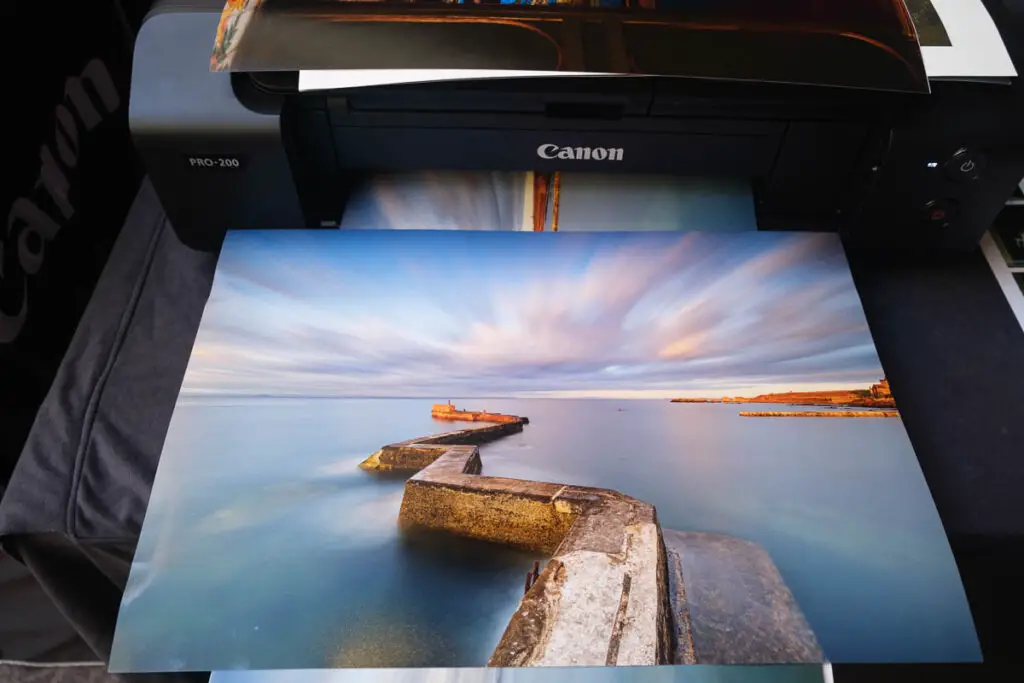
Historically, pigment inks are longer lasting, but Canon claim their official dye inks have a 100 year lifespan, so this is really a non-issue, provided you use official ink. Generic dye inks tend to have a much shorter lifespan, so if you can’t afford the relatively high official ink price, you might be better off looking to another printer, like the Canon Pro-300.
There is also some variability in black and white prints, caused by the dye-based inks giving either a magenta or greenish hue. If you are printing in black and white, this is still a fine printer, but will take more calibration to get outstanding results. Color work is by contrast uniformly excellent, especially on standard photo paper, making this the best printer for photos and cardstock.
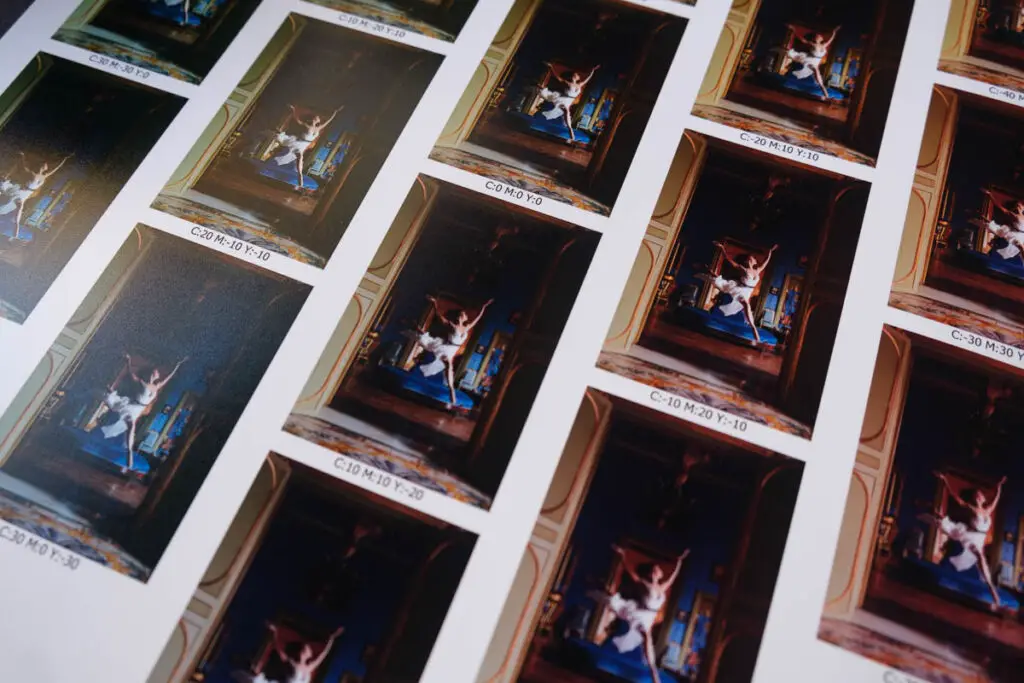
You are also not limited in practice to any paper weight. The Canon Pro 200 will print 110 lb cardstock paper through to much heavier paper, provided it is not too thick to fit through the rollers.
Overall, the Canon Pixma Pro-200 is an excellent printer, with plenty of improvements over the Pro-100, including better inks, no problems with borderless printing, and with a screen.
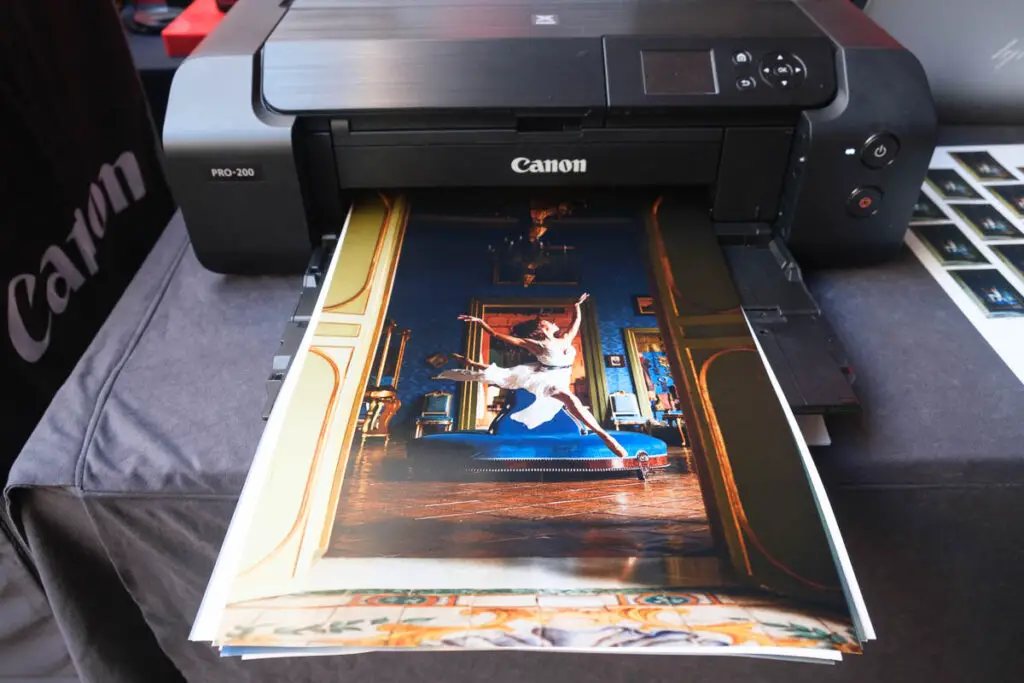
The Canon Pro 200 is my choice of best printer for card stock.
- Pros:
- Newest model, an update of the Pro-100
- Vibrant, sharp colors
- More budget version of the Pro-300, with nearly the same quality of prints
- Low ink cost per sheet
- Borderless printing up to A3
- Lighter than the Pro-300, but the same size
- Very long, panoramic prints possible
- Cons:
- Dye-based inks rather than pigment inks on the Pro-300
- Difficult to find compatible inks due to the newness of the printer
Read More:
Compare the Canon Pro 200 vs Pro 300 (Real World Tests)
2. Canon imagePROGRAF PRO-300
-
Specifications:
- Brand: Canon
- Name: Canon imagePROGRAF Pro-300
- Printing Tech: Inkjet
- Cost: $$$$
- No. of Inks: 9 + 1 Chroma Optimizer
- Ink Life: From 100 – 500 (A2 prints)
- Ink Cost (Official / Generic): ~ $123 – Check Price / N/A
- Max. Print Width: 13 inches
- Max. Paper Weight: 150 lb / 400 gsm
- DPI: 4800 x 2400
- Connectivity: WiFi, Ethernet, USB
- Size: 25.2″ x 15″ x 7.9″
As a heavy cardstock printer, the Pro-300 is maybe the perfect blend of professionalism and home use.
This is the middle brother of Canon’s lineup, below the Pro-1000 and above the Pro-200, with comparable print quality and color accuracy to the Pro-1000, but in a smaller, cheaper package. You lose two inks from the Pro-1000, and four inches of maximum width, but this make very little difference to most people, in practice.
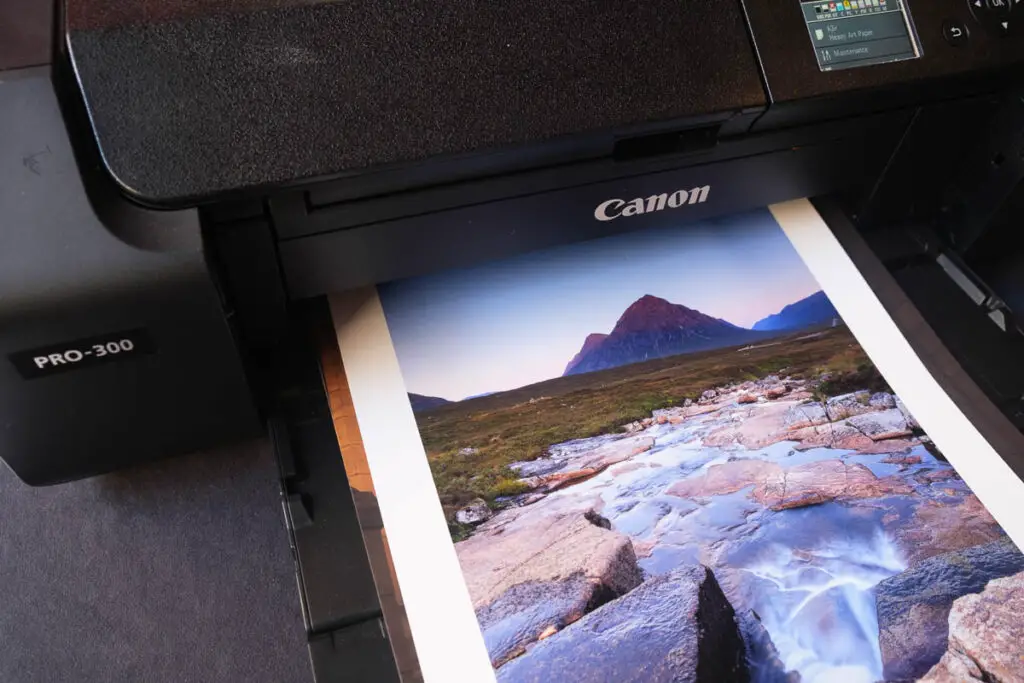
The Pro-300 beats the Pro-1000, in my opinion, based on two factors: the much lower price, and much lower official ink replacement cost. The Pro-300 is essentially a home version of the Pro-1000, designed to be used intermittently, rather than everyday. It takes up a relatively small amount of desk space for a professional photo printer, and far less than the Pro-1000, matching the Pro-200 in size.

You are not going to get any better print quality than this without going to a dedicated photo lab, thanks to the pigment inks which slightly beat the dye inks of the Pro-200, at least for black and white work.
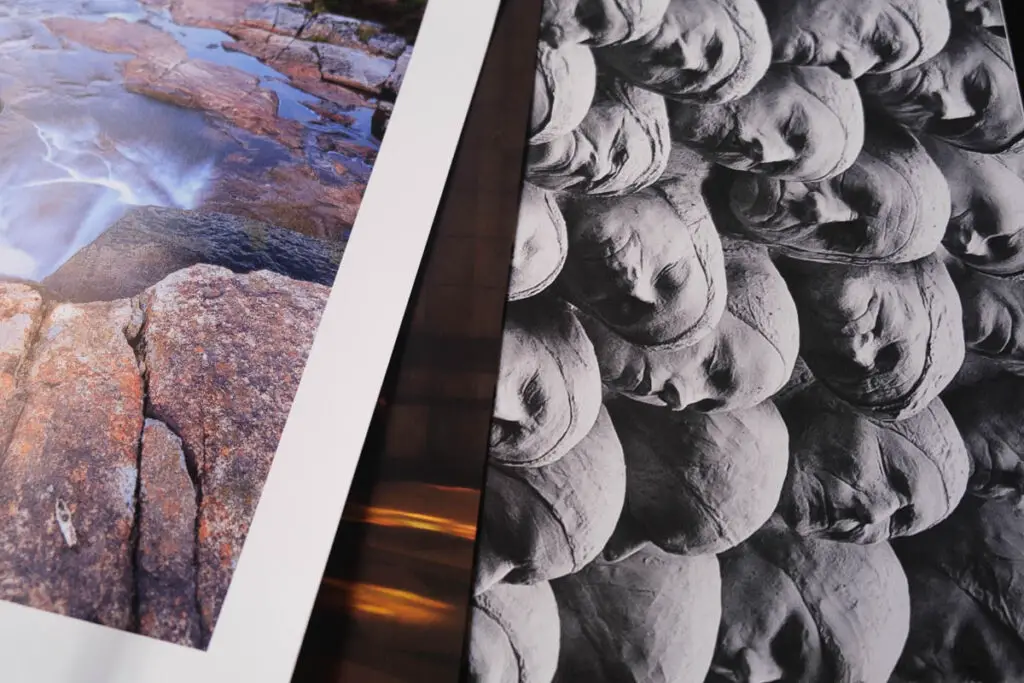
Situated between the Pro-1000 and Pro-200, the Pro-300 is really designed for those who are not intending to make tens of prints everyday, which is when the Pro-1000 comes into its own. This really only beats the Pro-200 if you are focusing on black and white work, otherwise the Pro-200 is very hard to beat in everyday use as a printer for thick card.
- Pros:
- Best professional photo printer
- Fantastic photo print quality
- Superb color accuracy and vibrancy that pops
- Reasonably priced for the quality of prints
- Smaller and lighter than the Pro-1000
- Very long, panoramic prints possible
- Cons:
- Expensive
- Not quite value for money for card stock printing, when compared to the Pro-200
Read More:
Compare the Canon Pro 200 vs Pro 300 (Real World Tests)
3. Canon imagePROGRAF PRO-1000
-
Specifications:
- Brand: Canon
- Name: Canon imagePROGRAF Pro-1000
- Printing Tech: Inkjet
- Cost: $$$$$$
- No. of Inks: 11 + 1 Chroma Optimizer
- Ink Life: Approx. 700 sheets (at 11″ x 17″)
- Ink Cost (Official / Generic): ~ $59 x 12 ($720) – Check Price / ~ $375 – Check Price
- Max. Print Width: 17 inches
- Max. Paper Weight: 150 lb / 400 gsm
- DPI: 4800 x 2400
- Connectivity: WiFi, Ethernet, USB
- Size: 28.5″ x 17″ x 11.2″
The Canon Pro-1000 is the largest printer reviewed here, capable of producing prints 17 inches wide, making it fantastic for making prints for walls or for any other large format use – this is not the ideal printer if you are making cards, but it does handle cardstock very well.
The print quality and color accuracy are second-to-none, with bright, brilliant colors from the 11 individual color cartridges, plus the chroma optimizer that really makes colors pop.
The printer is so good in fact, that it will pick up all of the small flaws in your photos or artwork that you didn’t even notice. If nothing else, this printer will make you a better artist!
Ink life is relatively good, and you should be able to get a few hundred prints before needing replacements, but this will be reduced if you switch the printer on and off repeatedly – it is designed to be in near-constant use.
Bear in mind that official ink refills come in at over $700. Although slightly cheaper generic ink is available, it is not going to have the same pop as official ink. If you can’t afford the refills, then you can’t afford the printer.
- Pros:
- Best professional photo printer
- Supports sheets up to 17 inches wide
- Stunning photo quality
- Brilliant color accuracy with deep blacks and perfect colors
- Cons:
- Very large and heavy (70.5 lbs!)
- Very expensive
4. Epson Expression Photo HD XP-15000
-
Specifications:
- Brand: Epson
- Name: Epson Expression Photo HD XP-15000
- Printing Tech: Inkjet
- Cost: $$
- No. of Inks: 6
- Ink Life: Approx. 100 sheets (black) / 70 sheets (color)
- Ink Cost (Official / Generic): $95 / ~ $59 – Check Price
- Max. Print Width: 13 inches
- Max. Paper Weight: 150 lb / 400 gsm
- DPI: 5760 x 1440
- Connectivity: WiFi, Ethernet, USB
- Size: 14.5″ x 18.7″ x 6.3″
If you are looking for cheap A3 card printer, then the Epson XP-15000 is a very good choice. The price is relatively low and you get excellent photo quality and color accuracy, almost at a professional level.
You can really only beat this with a much more expensive printer, or by going to a pro lab, which makes this my choice of best budget printer for cardstock.
As with all Epson printers, Epson regularly sends out firmware updates that block generic inks from working. For this printer, you are looking at nearly $100 for a full set of genuine inks, which offer superb color accuracy, but do not last long.
Nonetheless, the XP-15000 remains a very good cheap printer for cardstock and a strong contender for the best inkjet printer for cardstock.
- Pros:
- Top choice for home users wanting professional prints
- Excellent photo quality
- Fantastic color accuracy from the Claria HD inks
- Relatively fast photo print speeds
- Two input trays
- Small footprint for it’s max print size
- Cons:
- High cost-per-print
- Control screen not touchscreen
- Generic inks rarely work in Epson printers
5. Canon Pixma Pro-100
-
Specifications:
- Brand: Canon
- Name: Canon PIXMA Pro-100
- Printing Tech: Inkjet
- Cost: $$$$
- No. of Inks: 8
- Ink Life: Approx. 50 sheets (A3+ size)
- Ink Cost (Official / Generic): ~ $101 – Check Price / ~ $22 – Check Price
- Max. Print Width: 13 inches
- Max. Paper Weight: 130 lb / 350 gsm
- DPI: 4800 x 2400
- Connectivity: WiFi, Ethernet, USB
- Size: 27.13″ x 15.16″ x 8.46″
Although the Canon Pixma Pro 100 is still a very good printer for thick paper, it is now a few years old, and is sold massively overpriced by resellers.
But the wide availability of very cheap generic ink means that if you can find it for a good price, you get essentially lab quality prints, with exceptional color accuracy for your money.
Although the Canon Pro 200 offers better print quality, there is actually not too much difference in practice, and you should be able to happily use the Pro 100 for pretty much all cardstock printing tasks.
One of the advantages of the Pro 100 is that it is designed more for home users than those printing every day, meaning that ink nozzles should not become clogged if there is a longer period of weeks between prints, unlike the Pro 1000.
At the current price, I wouldn’t recommend the Pro-100, as the improved Pro-200 is considerably cheaper, but if you can find this for a bargain price you will almost certainly be very happy with the printer.
- Pros:
- Relatively cheap generic ink available
- Photo lab high quality prints and color accuracy
- Relatively fast printing (A3 size in 90 secs)
- Includes two gray inks for superior black and white printing (after tuning)
- Cons:
- Superseded by the Pro-200, and now much more expensive
- Limited max length of prints
- No screen
6. Epson SureColor P700
-
Specifications:
- Brand: Epson
- Name: Epson SureColor P700
- Printing Tech: Inkjet
- Cost: $$$$$
- No. of Inks: 10
- Ink Life: Approx. 20 large sheets (A3+ size)
- Ink Cost (Official / Generic): Approx. $380 / N/A
- Max. Print Width: 13 inches
- Max. Paper Weight: 150 lb / 400 gsm
- DPI: 5760 x 1440
- Connectivity: WiFi, Ethernet, USB
- Size: 20.3″ x 30.3″ x 16.5″
If you are looking for an Epson cardstock printer that can handle very large prints, then the P700 is a good choice, only let down by the very high cost of replacement ink.
As the successor to the Epson Surecolor P600 inkjet printer, the P700 offers much the same high quality performance, but in an up-to-date package. You are getting photo lab quality images here, with fantastic color accuracy and print quality, but this comes at a steep price.
Improvements include the printer now containing two kinds of black cartridges, one for gloss and one for lustre paper, with the printer auto-switching to the relevant black, depending on the paper type being used.
This is not a printer designed for leaving for long periods of time, as the printer heads can get clogged with infrequent use, and will waste a lot of ink when cleaning on startup, so you should be sure that you are printing everyday to justify this printer. If you are, then it is essentially a cheaper Epson version of the Canon Pro-1000.
- Pros:
- Can make huge prints
- Fantastic photo quality and color accuracy
- Fast photo printing for large prints (A3 in 2 mins 30 secs)
- Easy to use touchscreen and excellent connectivity
- Cons:
- Very expensive
- High cost-per-print & very high ink cost
- Maintenance cart can use up a lot of ink
- Comes with ‘demo’ smaller ink cartridges
7. HP Envy 6055
-
Specifications:
- Brand: HP
- Name: HP Envy 6055
- Printing Tech: Inkjet
- Cost: $
- No. of Inks: 2
- Ink Life: Approx. 130 sheets (black) / 65 sheets (color)
- Ink Cost (Official / Generic): ~ $30 – Check Price / ~ $45 – Check Price
- Max. Print Width: 8.5 inches
- Max. Paper Weight: 70 lb / 200 gsm (card); 110 lb / 300 gsm (paper)
- DPI: 4800 x 1200
- Connectivity: Wifi, USB
- Size: 17.03″ x 14.21″ x 5.2″
If you’re looking for an inexpensive cardstock printer, then check out the HP Envy 6055, which is the best home printer for cardstock for those on a strict budget.
The Envy can produces borderless prints, and has an integrated scanner. Although you can only print on up to 200 gsm card, you can use up to 300 gsm photo paper, so this is definitely more suited to home use than professional use.
If you are looking for something to handle simple card stock print jobs, like the best printer for invitations, then the Envy 6055 fits the bill.
Although the color ink cartridge will only produce about 65 prints before requiring a relatively pricey replacement, you can currently sign up for HP instant ink on buying this printer ($2.99 / month). This gives you enough ink for 50 sheets per month, plus unlimited photo prints at up to 5 x 7 inches. You still have to buy photo paper of course, but ink will be ordered by the printer using WiFi when running low, so that you never run out.
- Pros:
- Very good photo print quality
- Fantastic color accuracy
- Access to HP instant ink – free 5 x 7 photo prints!
- Small, compact, and easily fits on your desk
- Cons:
- Poor cost-per-print ratio
- No automatic scanning features
- No display screen
8. HP Color LaserJet Pro M255dw
-
Specifications:
- Brand: HP
- Name: HP Color LaserJet Pro M255dw
- Printing Tech: Laserjet
- Cost: $
- No. of Inks: 4
- Ink Life: Approx. 1350 sheets (black) / 1250 sheets (color)
- Ink Cost (Official / Generic): ~ $415 – Check Price / ~ $98 –Check Price
- Max. Print Width: 8.5 inches
- Max. Paper Weight: 47 lb / 145 gsm
- DPI: 600 x 600
- Connectivity: WiFi, USB, Ethernet
- Size: 16.2″ x 18.5″ x 11.6″
You must remember when looking for the best color laser printer for cardstock, that although laser printers offer reduced image quality, and so are less suitable for photo prints and anything that has large amounts of detail, there are some uses where laser printers excel: high volume printing of greeting cards and invitations.
If you are wanting to constantly produce large numbers of either, then this is the best HP printer for cardstock, thanks to its fast 28 pages per minute print speed and low cost per page.
If you are wanting a similar performance from an inkjet printer, then you would have to look at something like the Canon Pro-1000, which is significantly more expensive.
You can’t use cardstock higher than 47lb (65lb / 175 gsm at a pinch), but this is more than sufficient for most postcards or greetings cards, with the HP LaserJet Pro M255dw actually able to deal with the heaviest cardstock of any budget laser printer or cardstock laser printer.
For me, this is the best laser printer for cardstock printing, with a touchscreen control panel and relatively small footprint, and is ideal for greetings cards.
- Pros:
- Color laser printer that can print on cardstock
- Prints up to 28 pages per minute, both black and color
- 2.7″ color touchscreen for easy control
- Automatic double-sided printing
- Very good cost per page
- Designed for large capacity, high volume printing
- Ideal for postcards and greeting cards
- Cons:
- Lower DPI, so lower quality prints
- Expensive official ink
- Lower max official paper weight of 47 lb / 145 gsm
So, What’s the Best Printer that Prints on Cardstock?
For my money, you want to be sticking to an inkjet printer for cardstock rather than a laser cardstock printer.
Inkjets like the Canon Pro-200 offer brighter colors and the ability to print on 300gsm card. If you’re serious about cardstock printing, then there is no better home printer on the market than this.
The Best Printer for Cardstock
- Can handle pretty much any weight of cardstock, at least up to 150 lb / 400 gsm
- Newest model, an update on the Pro-100
- Vibrant, sharp prints with beautiful colors making it the best color printer for cardstock
- Low ink cost per sheet
- Up to 13 inch wide prints possible
- Borderless printing up to A3
- Dye-based inks, so very slight color cast for black and white images under different light sources
Read Related Articles:
A guide to the best monitor for photo editing on a budget
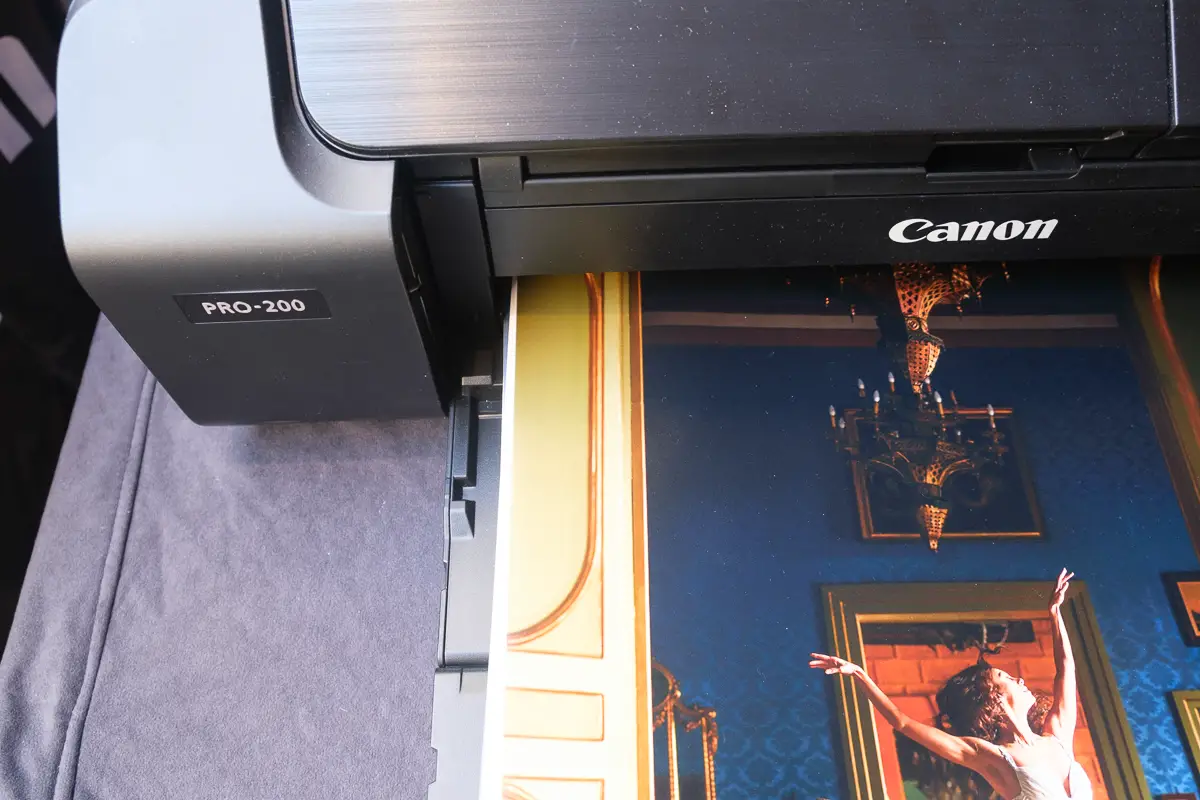
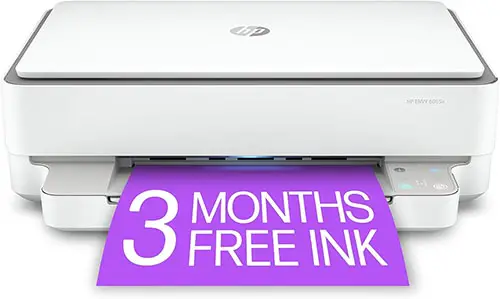
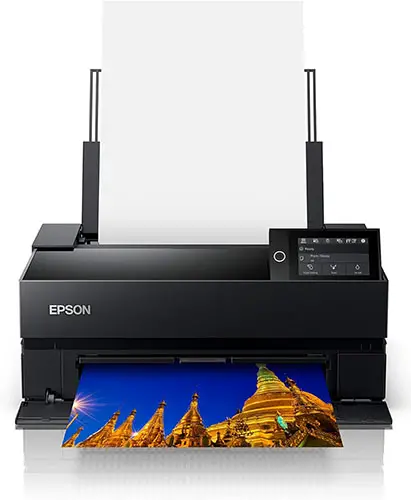
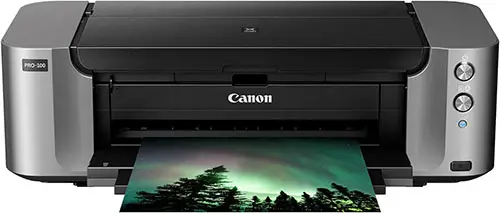
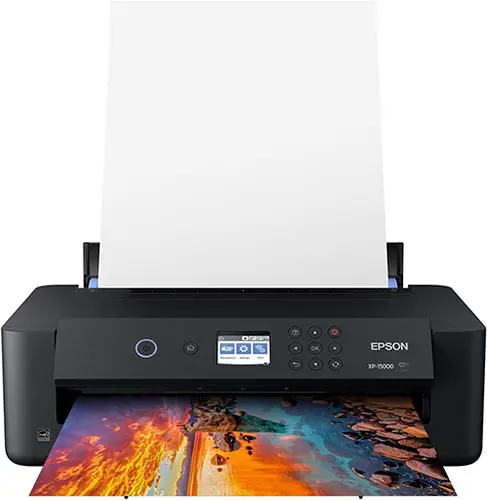
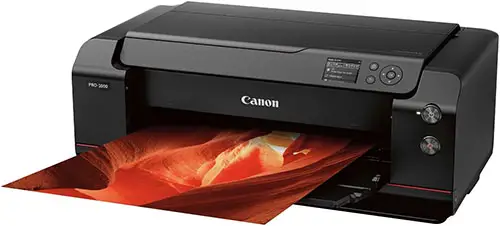
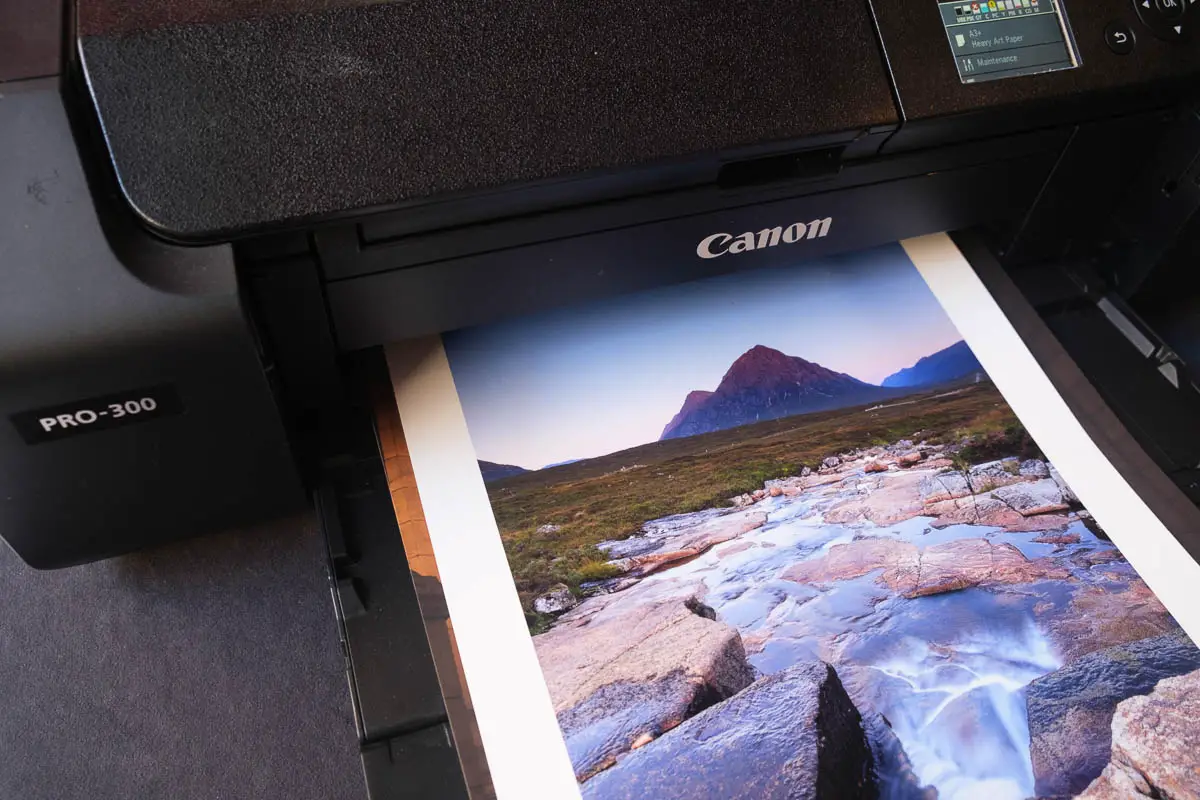

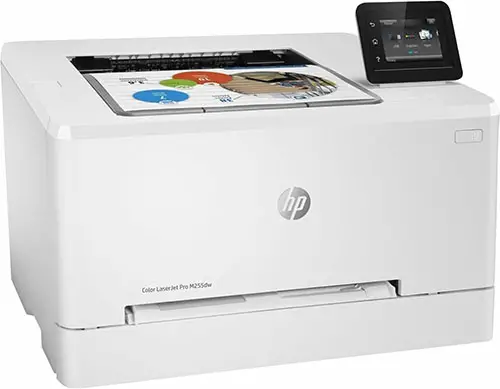
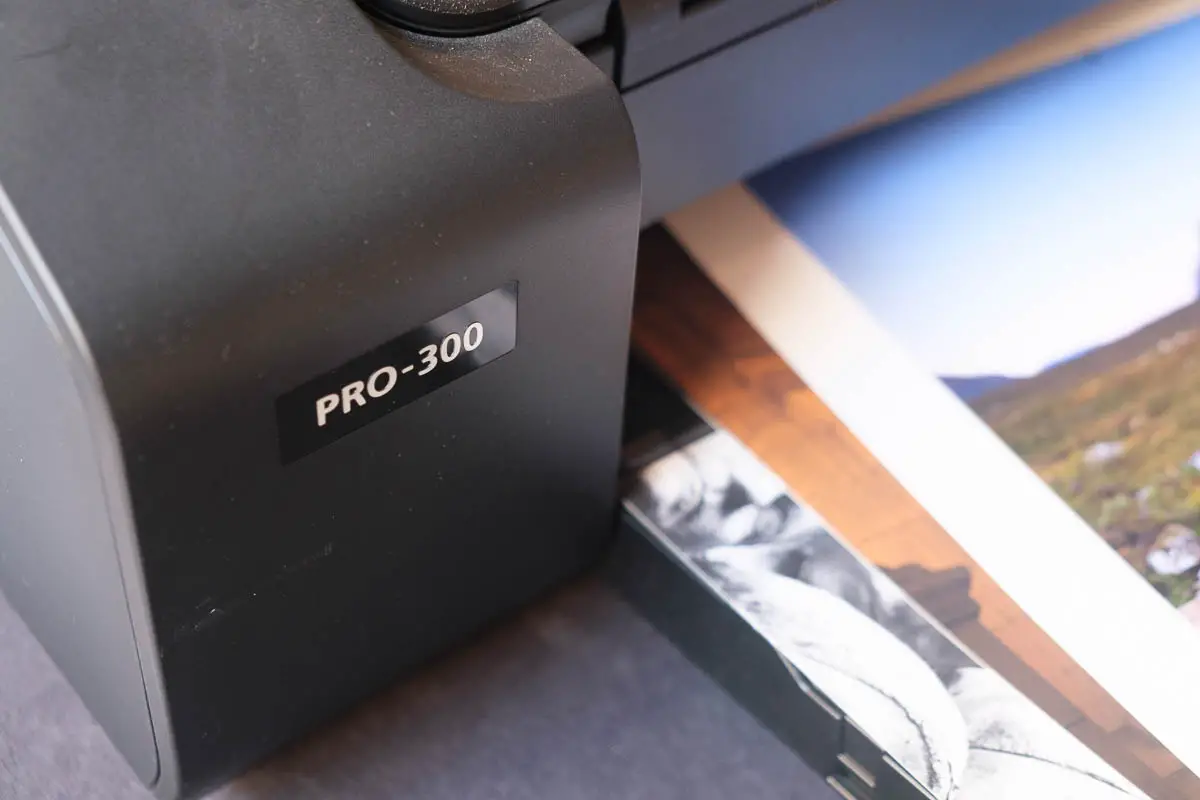








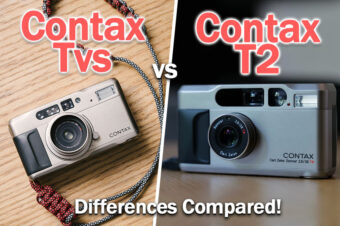

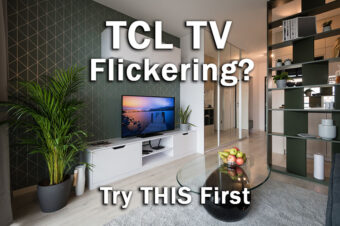
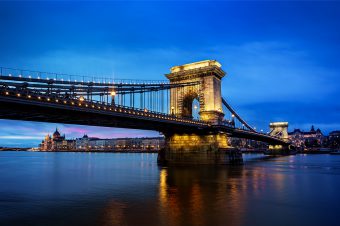
Leave a Reply